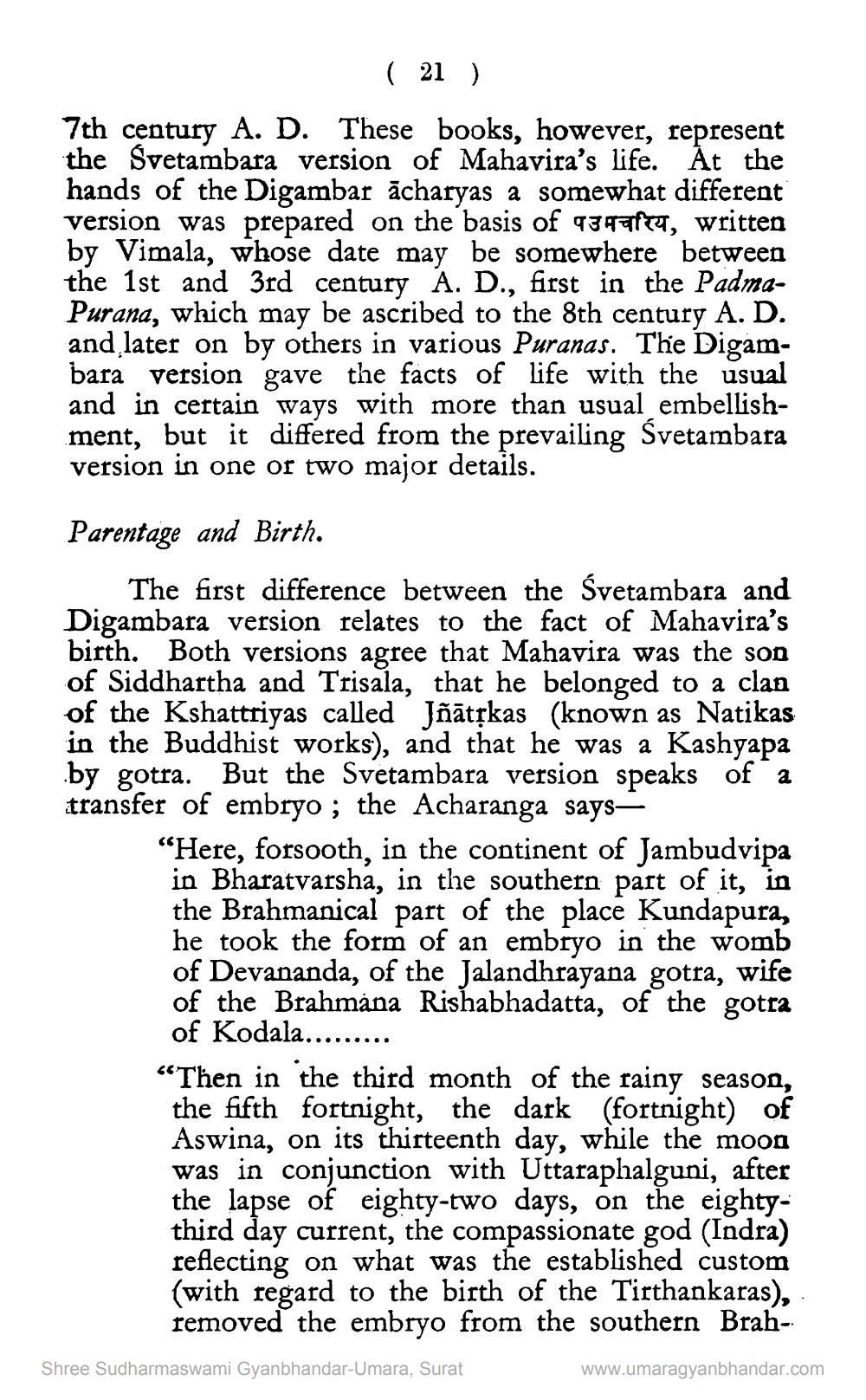________________
( 21 )
7th century A. D. These books, however, represent the Svetambara version of Mahavira's life. At the hands of the Digambar acharyas a somewhat different version was prepared on the basis of 931714, written by Vimala, whose date may be somewhere between the 1st and 3rd century A. D., first in the PadmaPurana, which may be ascribed to the 8th century A. D. and later on by others in various Puranas. The Digambara version gave the facts of life with the usual and in certain ways with more than usual embellishment, but it differed from the prevailing Svetambara version in one or two major details.
Parentage and Birth.
The first difference between the Svetambara and Digambara version relates to the fact of Mahavira's birth. Both versions agree that Mahavira was the son of Siddhartha and Trisala, that he belonged to a clan of the Kshattriyas called Jñātrkas (known as Natikas in the Buddhist works), and that he was a Kashyapa by gotra. But the Svetambara version speaks of a transfer of embryo ; the Acharanga says
“Here, forsooth, in the continent of Jambudvipa in Bharatvarsha, in the southern part of it, in the Brahmanical part of the place Kundapura, he took the form of an embryo in the womb of Devananda, of the Jalandhrayana gotra, wife of the Brahmana Rishabhadatta, of the gotra of Kodala......... “Then in the third month of the rainy season, the fifth fortnight, the dark (fortnight) of Aswina, on its thirteenth day, while the moon was in conjunction with Uttaraphalguni, after the lapse of eighty-two days, on the eightythird day current, the compassionate god (Indra) reflecting on what was the established custom (with regard to the birth of the Tirthankaras),
removed the embryo from the southern BrahShree Sudharmaswami Gyanbhandar-Umara, Surat
www.umaragyanbhandar.com




